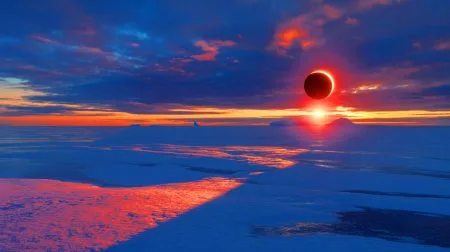The new decade saw intensified attention on global climate change. The World Economic Forum’s Global Risk Report 2020 linked climate to its top-five long-term risks to the economy. Wildfires ravaged Australia. Last year was the second warmest on record, while new forecasts suggest that the hottest year on record will occur between 2020 and 2024. Perhaps most alarming is climate-forecasting models have started projecting scenarios of 5 degrees Celsius of warming for reasons not fully understood.
Into this conflagration, a curious and unpredictable phenomenon may further jumble the equation: a grand solar minimum. A grand solar minimum can occur when the “solar magnetism diminishes, sunspots appear infrequently and less ultraviolet radiation reaches Earth,” according to NASA. The sun is a stormy brew of electrically charged gases that generates a magnetic field on a roughly 11-year cycle. The current cycle will end in December 2020.
Scientists do not understand solar cycles well at this point. Climate forecasting models, for instance, do not account for them. Yet we should take seriously warnings that we are entering colder, more unpredictable decades ahead, similar to the Maunder Minimum (1645-1715) or Dalton Minimum (1790-1830). According to Irina Kitiashvili, a researcher at the Bay Area Environmental Research Institute at NASA’s research center in California, this new cycle and the sun’s current low level of sunspots could indicate a coming grand solar minimum, which could lower temperatures by as much as 0.3 degrees Celsius by 2025.
Uncertainty and unpredictability
What might a grand solar minimum mean for global climate change? According to current scientific consensus, very little. The United Nations’ Intergovernmental Panel on Climate Change (IPCC) maintains that solar activity has little effect on Earth’s temperatures and would not make little difference in climate change. The IPCC warns, however, that “more research to investigate the effects of solar behavior on climate is needed before the magnitude of solar effects on climate can be stated with certainty.”
Other scientists argue that a grand solar minimum could act in unpredictable ways with other environmental and social variables. This would put us in an even more perilous position in ten years. A 2014 academic paper covered various scenarios and suggested that colder temperatures would be likely in the northern hemisphere due to a weakening of the stratospheric westerly jet. Other studies place the likelihood of entering a Maunder Minimum at 15% to 20%.
A grand solar minimum will not save us from human-generated greenhouse gas emissions. Discourse around such a phenomenon, however, could halt urgency to address them. What is more facile than a right-wing nationalist populist seizing on colder weather to hold on to power? This new narrative could slow down social backing for the dramatically stronger climate policies that we need.
Climate change, plague, and migration
In Why the West Rules – For Now, Ian Morris calls climate change, epidemic, famine, migration, and state failure “the five horsemen of the apocalypse.” Civilization collapse or decline, he argues, when these forces conjoin.
The Romans rode warmer temperatures, abundant rainfall and few volcanic eruptions to a period of agricultural and economic “efflorescence,” but fell pray to a solar minimum from 450-700, capped off by the twin arrival of plague out of China and volcanic eruptions, which are correlated to solar minima. The last 50 years, meanwhile, coincided with a grand solar minimum. Fossil fuels and their iterations have spawned incredible population growth and economic development. But this warmth aided the exponential expansion of human civilization.
We are currently staring down three of Morris’ apocalyptic horsemen. The outbreak of the coronavirus is already a global epidemic and could spark further migration, which spiked last decade. The eruption of the Taal volcano in the Philippines in January forced the evacuation of 147,000 people. Famine and state failure are likely outcomes of warming between 3 degrees to 5 degrees Celsius, which the World Meteorologic Organization recently forecasted. A grand solar minimum could add further volatility to climate and environmental change, while failing to reduce warming.
It feels like we are moving in the right direction on climate. But clearly we are not doing so fast enough. The grand solar minimum could, in theory, unleash more catastrophic events and give rise to a social tipping point. We should have already passed this point, of course. Colder weather, brought on by a potential grand solar minimum, might simply feed our complacency. This seems likely so long as we remain mired in our current age of irrationality.
Photo credit: pxhere.
Did you like it? 4.7/5 (29)





